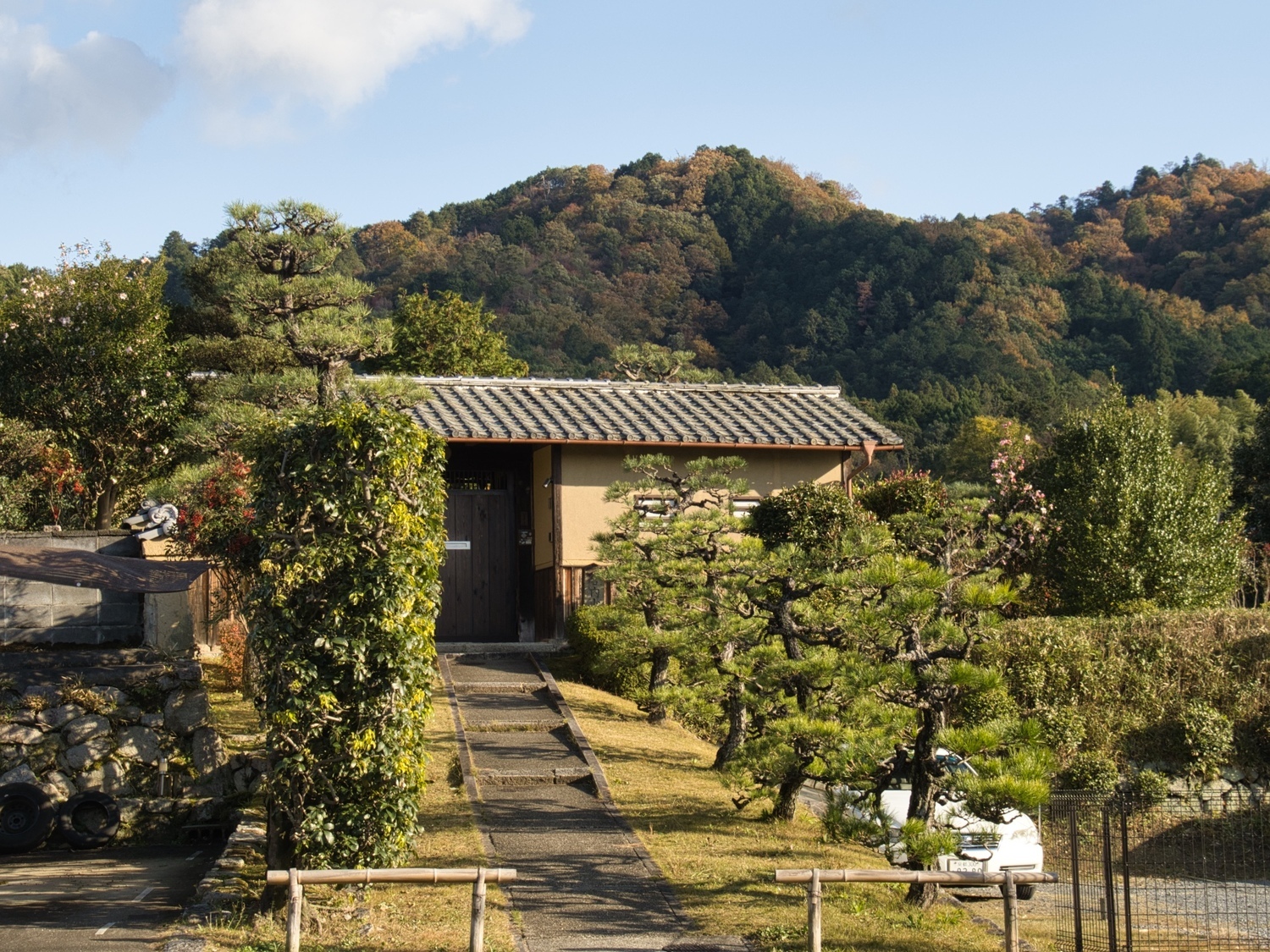Kunaishoyu Castle: Difference between revisions
No edit summary |
No edit summary |
||
| (One intermediate revision by the same user not shown) | |||
| Line 3: | Line 3: | ||
|Japanese Name=宮内少輔城 | |Japanese Name=宮内少輔城 | ||
|Romaji Name=Kunaishoyu-jo | |Romaji Name=Kunaishoyu-jo | ||
|Alternate Names=Watanabe-jo, Watanabe Yakata, Ichijoji Watanabe-jo | |Alternate Names=Watanabe-jo, Watanabe Yakata, Ichijoji Watanabe-jo, Ichijoji-jo | ||
|Founder=Watanabe Clan | |Founder=Watanabe Clan | ||
|Castle Type=Fortified Manor | |Castle Type=Fortified Manor | ||
| Line 13: | Line 13: | ||
|City=Kyoto | |City=Kyoto | ||
|Prefecture=Kyoto | |Prefecture=Kyoto | ||
|Notes=The castle site is private property, but you can see some of the original earthen embankments and layout of the central compound today. The nagayamon is really interesting and adds some historical ambiance to the site but is not actually from the castle. The size of the castle was much larger than just the private residence. There was some evidence (now developed over) of a wide area around the residence being encircled by the moat. It also led to nearby place names such as | |Notes=The castle site is private property, but you can see some of the original earthen embankments and layout of the central compound today. The nagayamon is really interesting and adds some historical ambiance to the site but is not actually from the castle. The size of the castle was much larger than just the private residence. There was some evidence (now developed over) of a wide area around the residence being encircled by the moat. It also led to nearby place names such as Horinouchi, or "within the moat". | ||
|History=The castle was built by the local landholders, the Watanabe clan, in the Muromachi Period. The Watanabe controlled the greater Ichijoji area and also built [[Ichijojiyama Castle]] making this flatland fortified home | |History=The castle was built by the local landholders, the Watanabe clan, in the Muromachi Period. The Watanabe controlled the greater Ichijoji area and also built [[Ichijojiyama Castle]] making this a flatland fortified home + mountaintop fortress combination that you often see in the Muromachi Period. | ||
During the conflict between Nobunaga and Ashikaga Yoshiaki in 1573 some of Yoshiaki's allies hid in the castle, but the castle referred to here might have actually been [[Ichijojiyama Castle]]. It was eventually found out and when assailed by Nobunaga's forces the Watanabe capitulated. After Nobunaga, The Watanabe allied with Hideyoshi and served under his horse guards. The Watanabe clan held their lands here and remained as local bureaucrats through the Edo Period. The descendants of the Watanabe continue to live here today. | During the conflict between Nobunaga and Ashikaga Yoshiaki in 1573 some of Yoshiaki's allies hid in the castle, but the castle referred to here might have actually been [[Ichijojiyama Castle]]. It was eventually found out and when assailed by Nobunaga's forces the Watanabe capitulated. After Nobunaga, The Watanabe allied with Hideyoshi and served under his horse guards. The Watanabe clan held their lands here and remained as local bureaucrats through the Edo Period. The descendants of the Watanabe continue to live here today. | ||
Latest revision as of 17:26, 28 January 2023
The castle site is private property, but you can see some of the original earthen embankments and layout of the central compound today. The nagayamon is really interesting and adds some historical ambiance to the site but is not actually from the castle. The size of the castle was much larger than
History
The castle was built by the local landholders, the Watanabe clan, in the Muromachi Period. The Watanabe controlled the greater Ichijoji area and also built Ichijojiyama Castle making this a flatland fortified home + mountaintop fortress combination that you often see in the Muromachi Period.
During the conflict between Nobunaga and Ashikaga Yoshiaki in 1573 some of Yoshiaki's allies hid in the castle, but the castle referred to here might have actually been Ichijojiyama Castle. It was eventually found out and when assailed by Nobunaga's forces the Watanabe capitulated. After Nobunaga, The Watanabe allied with Hideyoshi and served under his horse guards. The Watanabe clan held their lands here and remained as local bureaucrats through the Edo Period. The descendants of the Watanabe continue to live here today.
Field Notes
The castle site is private property, but you can see some of the original earthen embankments and layout of the central compound today. The nagayamon is really interesting and adds some historical ambiance to the site but is not actually from the castle. The size of the castle was much larger than just the private residence. There was some evidence (now developed over) of a wide area around the residence being encircled by the moat. It also led to nearby place names such as Horinouchi, or "within the moat".
| Castle Profile | |
|---|---|
| English Name | Kunaishoyu Castle |
| Japanese Name | 宮内少輔城 |
| Alternate Names | Watanabe-jo, Watanabe Yakata, Ichijoji Watanabe-jo, Ichijoji-jo |
| Founder | Watanabe Clan |
| Year Founded | |
| Castle Type | Fortified Manor |
| Castle Condition | Ruins only |
| Historical Period | Pre Edo Period |
| Features | |
| Visitor Information | |
| Access | Ichijoji Station (Eizan Rail); 15 mins walk |
| Hours | private property |
| Time Required | 10 mins |
| Location | Kyoto, Kyoto |
| Coordinates | 35.04608, 135.79457 |
|
|
|
| Admin | |
| Added to Jcastle | 2022 |
| Contributor | Eric |
| Admin Year Visited | 2021 |
| Admin Visits | November 23, 2021 |
| Friends of JCastle | |
| Kojodan: Kunaishoyu-jo | |













